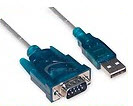How to install a Non-Tipping Rain Gauge {with internal relay} to a DB9 serial connector
Additional parts:
You will need to order a DB9 connector from ebay thay are about £1.95 and a DC power source ,you can use from 9-35v they are about £15.00, you need a cable which has 4 cores, I recommend using cat5 please read the non-tipping rain gauge manual and alter the dip switches to the settings you require.
Tools:
You're going to need a soldering iron,and solder, this is for soldering the two connections on the DB9 connector, a couple of screwdrivers.
Serial DB9 9 Pin Male connector Pin out
USB 2.0 to RS232 Serial Port DB9 9 Pin Male Converter Adapter Cable
The first thing is to mount the non-tipping rain gauge in a suitable location, you will need to run a 4 core cable, I would recommend cat5 cable , connect the cable to the non-tipping rain gauge each terminal, please remember to write down the cable colour you use to each of the connections, please see diagram fig 1, you will need this cable to run to your computer. Solder the connections to the DB9 female connector , please see diagram fig 2 , there are only two wires to solder pin {4} and pin {6} reassemble the connector housing . The next thing is to connect the DC power supply please see fig {1} if necessary use a electrical connector terminal block to join the transformer to your power feed.
If you have no serial port/or would prefer to use a USB slot use a USB to DB9 / serial connector
Non-tipping rain gauge terminal connection block
The RG-10 may also provide drop detection. Use this mode if you want to do your own external data interpretation. The output will pulse once with each detected drop. Normally, it will produce longer pulses (in multiples of 200 mS) for larger drops. If set to multiple pulses per drop (SW 3 ON), each detected drop will generate one or more 100 mS pulses, depending on drop size.
Rain Tracker Rain Gage - Model RG-10
# Maintenance free
# Compact-- about the size of a tennis ball
# DIP switch programs the function and outputs
# Extremely sensitive. The sophisticated circuitry and DSP algorithms count and totalize individual raindrops. If you need something to detect the first raindrop, this can be your solution.
# Internal heater for cold weather applications
# 9 - 35VDC Operation
# Two Open collector outputs
# No mechanical parts. It is not affected by jostling and motion. Can be completely mobile, and mounted in any orientation
# Round sensing surface is essentially self-cleaning
# No exposed conductors to corrode. No openings for bugs to crawl into or for spiders to build nests. The Rain Gage compensates for surface grime or other degradation, so in most cases no maintenance is needed
# Daylight and temperature sensing
# Optical rain sensor can also detect other liquid
Webpage under development settings are not implemented in Web display at the moment for the serial/UBS connections
















